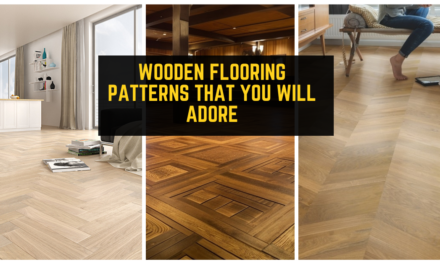In the world of interior design, minimalist styles have gained immense popularity in recent years. Embracing simplicity, functionality, and clean lines, minimalist design focuses on creating spaces that are uncluttered yet visually striking. When it comes to flooring, minimalist trends have influenced a shift towards sleek and understated wooden flooring options. Let’s delve into the realm of minimalist wooden flooring trends and explore how they can enhance the aesthetic appeal of any space.
Clean Lines and Seamless Surfaces
Minimalist wooden flooring is characterized by clean lines and seamless surfaces. Opting for narrow planks or even wide boards with minimalistic grain patterns can create a sleek and uniform appearance. The goal is to achieve a sense of continuity and flow throughout the space, without distractions or clutter.
Light Wood Tones
Light wood tones are a hallmark of minimalist design, as they help to brighten and open up a room. Blonde woods such as maple, birch, and ash are popular choices for minimalist wooden flooring, as they impart a sense of airiness and simplicity. Light wood floors also provide an ideal backdrop for minimalist furniture and décor, allowing them to stand out without competing for attention.
Matte Finishes
In keeping with the understated nature of minimalist design, matte finishes are preferred over glossy or high-shine surfaces. Matte finishes not only enhance the natural beauty of the wood but also offer a more tactile and subdued aesthetic. They are less prone to showing scratches and fingerprints, contributing to the overall clean and pristine look of the space.
Wide Planks with Minimalistic Grain Patterns
While traditional wooden flooring often features intricate grain patterns and knots, minimalist trends favor simpler and more uniform surfaces. Wide planks with subtle grain variations add visual interest without overwhelming the space. Oak and walnut are popular choices for minimalist wooden flooring, as they offer timeless elegance with their rich tones and refined grain patterns.
Monochromatic Color Schemes
Minimalist design is all about simplicity, and this extends to the color palette of the space. Monochromatic color schemes, featuring varying shades of white, beige, and gray, are commonly used in conjunction with minimalist wooden flooring. This creates a harmonious and cohesive look, where the focus is on the interplay of light and shadow rather than bold contrasts.
Embracing Negative Space
In minimalist design, negative space plays a crucial role in defining the overall aesthetic. Wooden flooring with clean lines and uninterrupted surfaces helps to emphasize negative space, allowing furniture and architectural elements to stand out against the backdrop. This creates a sense of balance and tranquility, contributing to the minimalist ethos of simplicity and clarity.
Sustainable Materials
As sustainability becomes increasingly important in interior design, minimalist wooden flooring trends also emphasize the use of eco-friendly materials. Opting for responsibly sourced wood from certified forests ensures that your flooring choice has minimal environmental impact. Additionally, choosing durable and long-lasting materials reduces the need for frequent replacements, further minimizing waste and carbon footprint.
Conclusion
Minimalist wooden flooring trends offer a harmonious blend of simplicity, functionality, and timeless elegance. By embracing clean lines, light wood tones, matte finishes, and wide planks with minimalistic grain patterns, you can create a space that is both visually stunning and uncluttered. Whether you’re designing a contemporary home or a sleek office space, minimalist wooden flooring provides the perfect foundation for showcasing your minimalist aesthetic.





